Age influences the olfactory profiles of the migratory oriental armyworm mythimna separate at the molecular level
- PMID: 28056777
- PMCID: PMC5217624
- DOI: 10.1186/s12864-016-3427-2
Age influences the olfactory profiles of the migratory oriental armyworm mythimna separate at the molecular level
Abstract
Background: The oriental armyworm Mythimna separata (Walk) is a serious migratory pest; however, studies on its olfactory response and its underlying molecular mechanism are limited. To gain insights to the olfactory mechanism of migration, olfactory genes were identified using antennal transcriptome analysis. The olfactory response and the expression of olfactory genes for 1-day and 5-day-old moths were respectively investigated by EAG and RT-qPCR analyses.
Results: Putative 126 olfactory genes were identified in M. separata, which included 43 ORs, 13 GRs, 16 IRs, 37 OBPs, 14 CSPs, and 3 SNMPs. RPKM values of IR75d and 10 ORs were larger than co-receptors IR25a and ORco, and the RPKM value of PR2 was larger than that of other ORs. Expression of GR1 (sweet receptor) was higher than that of other GRs. Several sex pheromones activated evident EAG responses where the responses of 5-day-old male moths to the sex pheromones were significantly greater than those of female and 1-day old male moths. In accordance with the EAG response, 11 pheromone genes, including 6 PRs and 5 PBPs were identified in M. separate, and the expression levels of 7 pheromone genes in 5-day-old moths were significantly higher than those of females and 1-day-old moths. PR2 and PBP2 might be used in identifying Z11-16: Ald, which is the main sex pheromone component of M. separata. EAG responses to 16 plant volatiles and the expression levels of 43 olfactory genes in 1-day-old moths were significantly greater than that observed in the 5-day-old moths. Heptanal, Z6-nonenal, and benzaldehyde might be very important floral volatiles for host searching and recognized by several olfactory genes with high expression. Some plant volatiles might be important to male moths because the EAG response to 16 plant volatiles and the expression of 43 olfactory genes were significantly larger in males than in females.
Conclusions: The findings of the present study show the effect of adult age on olfactory responses and expression profile of olfactory genes in the migratory pest M. separate.
Keywords: Co-receptor; Host searching; Migration; Mythimna separata; Olfaction; Pre-mating status; Sex pheromone.
Figures
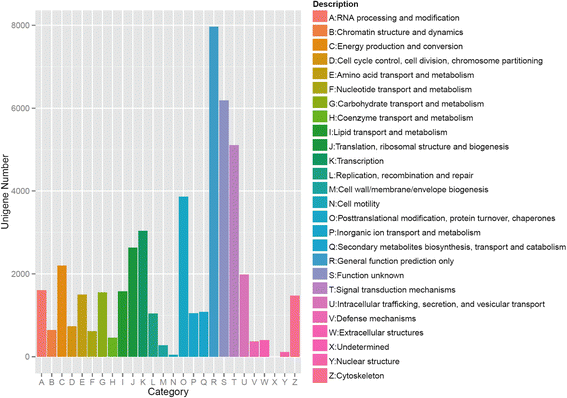



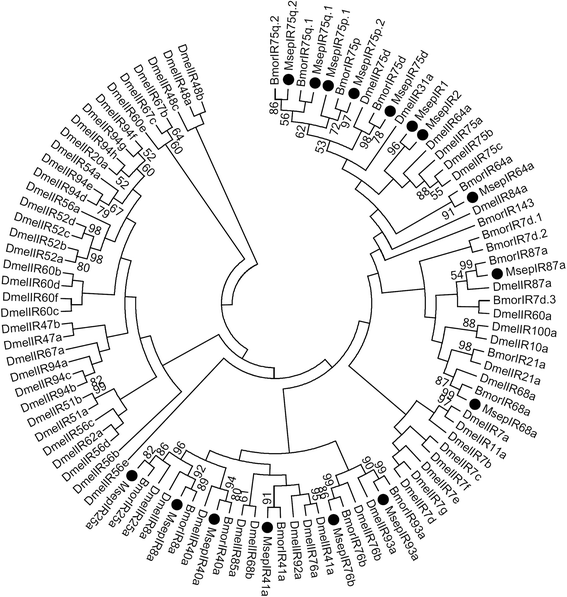
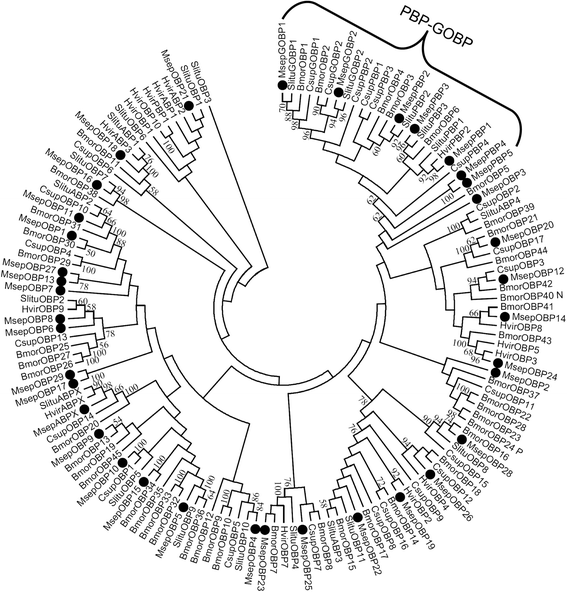

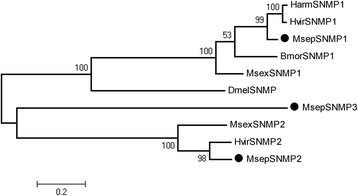
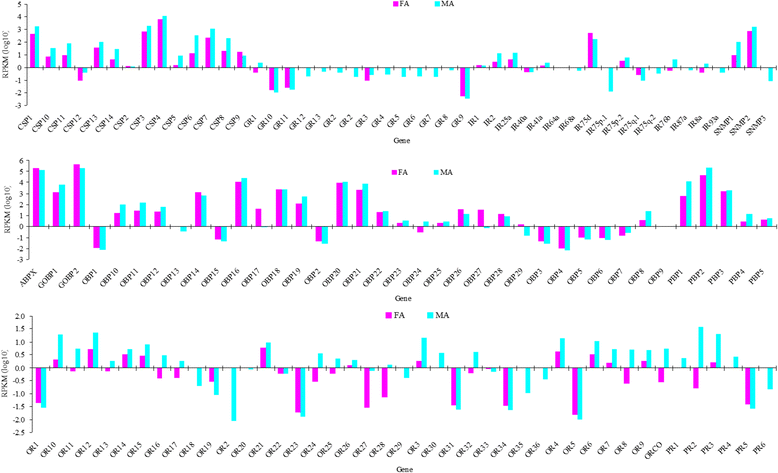

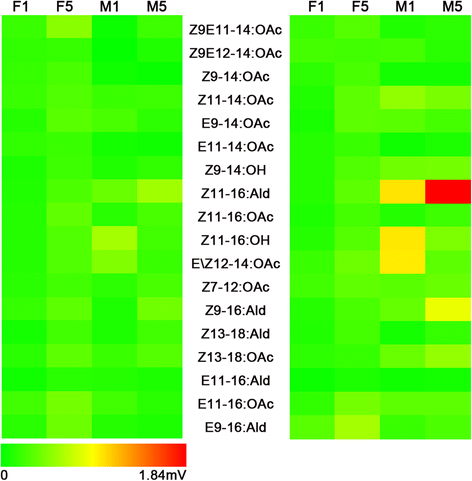

References
-
- Sharma HC, Davies JC. The oriental armyworm, mythimna separata (Wlk.) distribution, biology and control: a literature review. Miscellaneous report No 59. Wrights Lane: Overseas Development Administration; 1983.
Publication types
MeSH terms
Substances
LinkOut - more resources
Full Text Sources
Other Literature Sources

